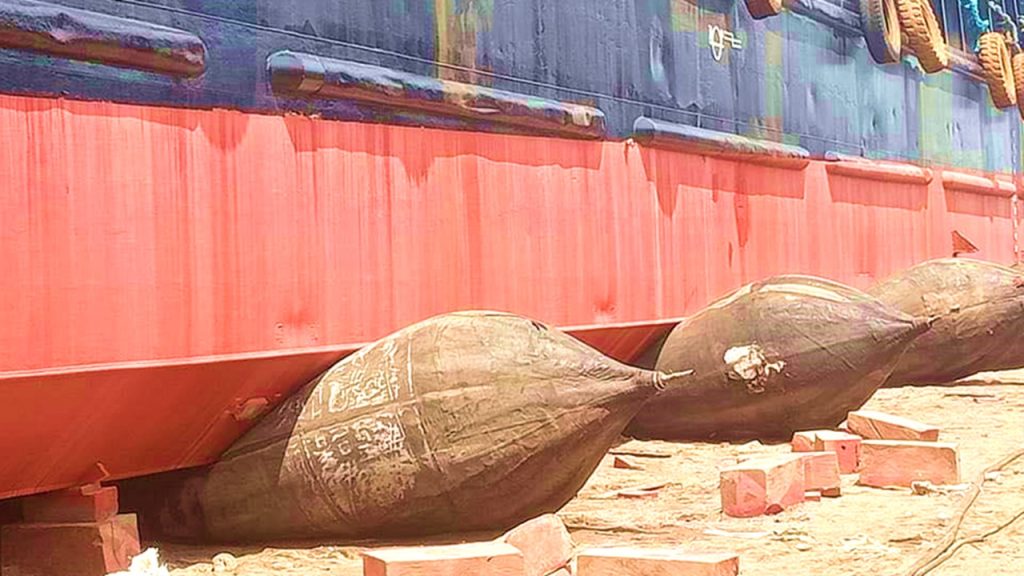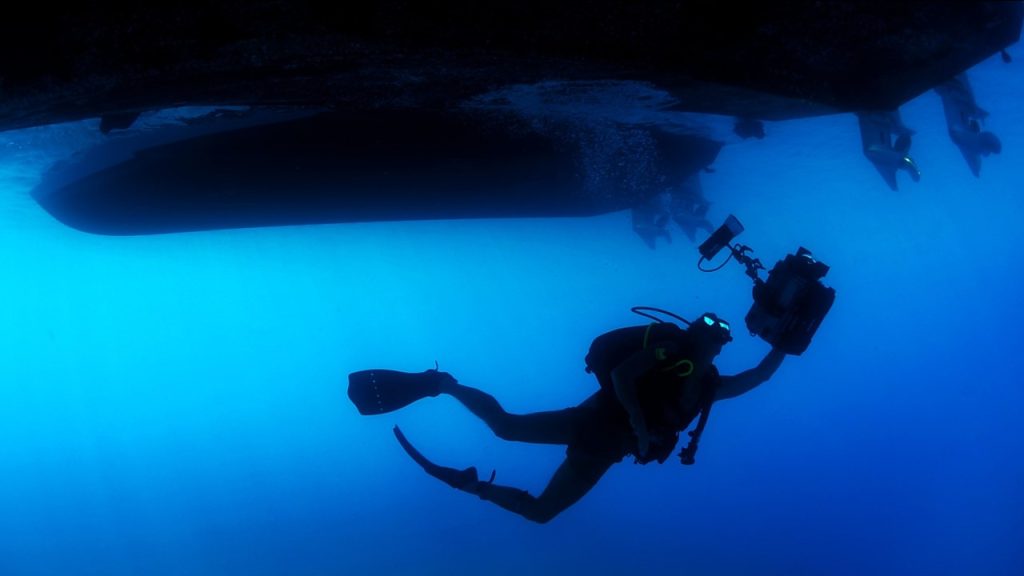Ship painting in the Philippines is an art form that goes beyond aesthetics; it safeguards vessels from the harsh elements of the sea while enhancing their overall appearance. In the Philippine maritime industry, ship painting and blasting play a crucial role during repairs, ensuring that these behemoths are not only structurally sound but also visually appealing. For Filipinos working in this field, mastering the techniques and skills involved in ship painting and blasting can open up a world of opportunities both at home and abroad. This article will provide valuable tips and insights for Filipinos looking to excel in this specialized profession, offering guidance on everything from surface preparation to selecting the right paint products. So whether you’re a seasoned professional or just starting out, read on to discover how you can become a master of ship painting and blasting techniques.
Click here to view our ship blasting and painting capabilities.
The Importance of Ship Painting and Blasting in the Philippines
One might underestimate the importance of ship painting and blasting during repairs, but it plays a crucial role in the maritime industry. The Philippines, being a hub for shipbuilding and repair services, understands this significance all too well. Ship painting not only enhances a vessel’s appearance but also serves as a protective barrier against corrosion and biofouling. Blasting, on the other hand, ensures that the surface is clean and free from contaminants before applying paint. This process maximizes paint adhesion and longevity, ultimately extending the lifespan of the ship.
In addition to protection and aesthetics, ship painting and blasting contribute significantly to safety in the maritime sector. A well-maintained vessel with a properly painted exterior helps prevent accidents at sea by improving visibility during adverse weather conditions. Furthermore, regular inspections and maintenance activities such as blasting allow for early detection of structural weaknesses or defects that could undermine a ship’s integrity. By addressing these issues promptly through effective painting techniques, ships can avoid potential disasters that may endanger crew members’ lives.
The economic benefits of ship painting and blasting should also be noted, particularly concerning fuel efficiency. A smooth hull achieved through proper surface preparation reduces drag while sailing through the water. As a result, less power is required to maintain or increase speed—a factor directly linked to fuel consumption reduction—a valuable consideration in today’s environmentally conscious world striving towards sustainable shipping practices.

Understanding the Process: Basics of Ship Painting and Blasting in the Philippines
When it comes to ship repairs, one important aspect that often gets overlooked is ship painting and blasting. This process plays a crucial role in preserving and protecting the vessel from corrosion and deterioration. Understanding the basics of ship painting and blasting can help Filipinos involved in this industry make informed decisions and ensure the longevity of our maritime assets.
Ship blasting involves the use of abrasive materials such as sand, grit, or shot that are propelled at high velocity onto the surface of the ship. This process removes old paint coatings, rust, and other contaminants effectively. It creates an ideal surface for better adhesion of new paint coats to ensure long-lasting protection against corrosion. Additionally, proper containment measures must be employed during blasting operations to prevent environmental pollution.
On the other hand, ship painting entails applying a protective coating system to safeguard the surface from potential damage caused by seawater, sunlight exposure, chemical attacks, or harsh weather conditions. The choice of an appropriate paint system depends on several factors, including environmental conditions (e.g., temperature and humidity), type of cargo carried by the vessel (e.g., chemicals or crude oil), aesthetic requirements (e.g., color scheme), and budget constraints. Proper application techniques are essential to achieve adequate film thickness and uniform coverage for optimal performance.
Understanding these fundamental aspects of ship painting and blasting is vital for Filipinos involved in offshore construction projects or working in port facilities where regular maintenance works are conducted on vessels.
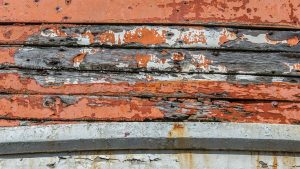
Choosing the Right Materials and Equipment for Ship Painting and Blasting
Choosing the right materials and equipment for ship painting and blasting during repairs in the Philippines is crucial in ensuring a successful and durable outcome. One of the most important considerations is the type of paint or coating to be used. Different coatings have different properties, such as resistance to corrosion, heat, chemicals, or UV rays. It is essential to select the appropriate coating that matches the vessel’s operating conditions to provide long-lasting protection.
In addition to choosing the right paint or coating, selecting the proper blasting equipment is equally vital in achieving satisfactory results. The choice of abrasive material can significantly impact the efficiency and effectiveness of blast cleaning operations. Steel grit abrasive is often preferred for its durability and ability to achieve a high-quality surface profile necessary for optimal adhesion of coatings. Investing in high-quality blasting equipment not only ensures efficient operations but also improves worker safety by reducing dust emissions.
Ultimately, careful consideration must be given when selecting materials and equipment for ship painting and blasting during repairs. By understanding the specific requirements of each project and making informed choices, Filipino ship repair professionals can ensure superior results that enhance both aesthetics and structural integrity. Whether it’s selecting an appropriate coating or investing in top-of-the-line blasting equipment, taking proactive steps toward optimizing repair processes will yield significant benefits for both business owners and vessel operators alike.
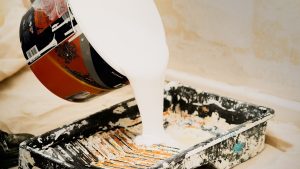
Key Considerations for Ship Blasting
One key consideration for ship blasting in the Philippines is the selection of the appropriate abrasive material. Different types of abrasives, such as sand, grit, or shot pellets, have varying levels of hardness and impact resistance. Choosing the right abrasive ensures the effective removal of old coatings or corrosion without damaging the underlying surfaces. Additionally, considering factors like cost, availability, and environmental impact can help determine which abrasive material is best suited for a particular ship blasting project.
Another important factor to consider in ship blasting is the type of equipment used. High-quality blast machines equipped with suitable nozzles and hoses can significantly improve both efficiency and safety during the process. This includes selecting equipment with adequate pressure capabilities to achieve high-quality surface preparation and proper containment systems to handle dust generated during blasting operations. Investing in reliable and modern equipment not only ensures better paint adhesion but also reduces downtime due to equipment failure or maintenance needs.
Furthermore, it is crucial to consider safety measures when conducting ship blasting activities. Workers should wear appropriate personal protective equipment (PPE), including respiratory protection masks and eye goggles, to minimize exposure to harmful dust particles and flying debris. Proper ventilation systems should also be implemented in confined spaces to prevent workers from inhaling hazardous contaminants. Implementing these safety practices not only protects workers’ health but also ensures compliance with industry regulations.
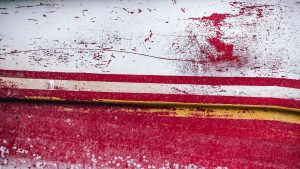
Step-by-Step Guide for Ship Sandblasting in the Philippines
One of the crucial steps during ship repairs in the Philippines is sandblasting, which plays a vital role in preparing surfaces for painting. This process involves propelling abrasive materials at high speeds to remove rust, scale, and other contaminants from the ship’s surfaces. To ensure effective and efficient sandblasting, it is important to follow a step-by-step guide.
Firstly, proper preparation is key. Before starting the process, all equipment should be checked for any defects or malfunctions. It’s also essential to clear the area of any loose debris or objects that could interfere with the process. Secondly, ensure you have suitable protective gear such as goggles, gloves, and a respiratory mask. Sandblasting can generate hazardous dust particles that can harm your eyes and lungs if not properly protected.
Next comes surface preparation. Remove any loose paint or corrosion using hand tools before proceeding with sandblasting. Additionally, tape off adjacent areas that don’t require treatment to protect them from accidental abrasion. Once everything is set up and prepped correctly, start sandblasting by keeping the nozzle at an appropriate angle and distance from the surface being blasted—too close may cause damage, while too far will reduce efficiency.
Regular inspection during this process is crucial to ensure thoroughness and uniformity in removing contaminants across all surfaces of the ship being worked on—it’s easy to miss hidden spots! Finally, after completing sandblasting operations successfully—within the time limitations set—you must clean up promptly following environmental safety protocols.
This includes collecting and disposing of the abrasive material, checking for any leftover debris or dust, and ensuring that all equipment is properly cleaned and maintained. Additionally, it is important for Filipino engineers and technicians to adhere to local regulations regarding the disposal of hazardous waste generated during the sandblasting process.
Once the cleanup is complete, it’s time to move on to the next step in ship maintenance: applying a protective coating.
Applying a protective coating is crucial for preserving the integrity of the ship’s surface and preventing corrosion. Before proceeding, it is essential to select the appropriate type of coating based on factors such as environmental conditions, vessel usage, and desired longevity.
Firstly, thorough preparation of the surface is necessary to ensure proper adhesion of the coating. This involves removing any remaining debris or contaminants from sandblasting and ensuring that it is dry and free from moisture.
Once the surface is prepared, it is time to apply the protective coating. There are various types of coatings available, each with its own unique properties and application methods. Some common options include epoxy coatings, polyurethane coatings, and silicone-based coatings.
Before starting the application process, it is crucial to carefully read and follow the manufacturer’s instructions for the chosen coating. This will ensure that Filipino engineers achieve optimal results and avoid any potential issues or complications.
One important step before applying the protective coating is to mix it properly. Most coatings come in two parts that need to be mixed together, usually a resin and a hardener. It is essential to follow the recommended mixing ratio provided by the manufacturer to ensure proper curing and adhesion of the coating.
Once the coating mixture is ready, it can be applied using various methods such as a brush, roller, or spray gun.
The method you choose will depend on the specific coating and the surface you are applying it to. If using a brush, make sure to select one with high-quality bristles that will provide smooth and even coverage. Start by dipping the brush into the coating mixture and removing any excess before applying it to the surface in long, even strokes. Be careful not to apply too much pressure or create uneven layers.
Rollers are another common method for applying protective coatings.
They are especially useful when covering large surface areas quickly and efficiently. When using a roller, choose one with the appropriate nap length for the coating being applied. Dip the roller into the coating mixture and remove any excess by rolling it against a tray or grid. Begin rolling the coating onto the surface in parallel strokes, working from top to bottom and side to side. Be sure to maintain consistent pressure while applying to ensure an even coat.
Continue rolling the coating onto the surface until it is evenly covered. If necessary, go over any missed areas with a second coat once the first coat has dried. It’s important to follow the manufacturer’s instructions for drying time between coats to ensure proper adhesion and durability.
Another method for applying protective coatings is spraying. This technique is ideal for covering large or intricate surfaces, as it allows for a more even distribution of the coating.
To apply a protective coating using the spraying method in the Philippines, start by preparing the sprayer according to the manufacturer’s instructions. This may involve diluting the coating with a specific ratio of solvent or adjusting the nozzle settings for desired coverage. Once ready, hold the sprayer at a consistent distance from the surface and begin spraying in a slow and controlled motion.
Move your arm smoothly from side to side, overlapping each pass slightly to ensure complete coverage.
Be mindful of the speed at which you move the sprayer to avoid applying too much or too little coating in one area. It’s important to maintain a steady pace and keep your hand steady to achieve an even distribution. As you spray, pay close attention to any corners, edges, or hard-to-reach areas that may require extra care.
When using a spraying method for protective coatings, it’s essential to wear proper personal protective equipment (PPE).

Step-by-Step Guide for Ship Painting
When it comes to ship painting in the Philippines, a well-executed process can greatly enhance the durability and aesthetics of a vessel. Whether you’re preparing to repaint your ship or considering a career in marine repair, it’s crucial to understand the step-by-step guide for ship painting. Firstly, thorough surface cleaning is essential to remove any dirt, grease, or old paint. This can be achieved through high-pressure water blasting or sandblasting methods. The next step involves inspecting the ship’s surface for any damages or corrosion that need to be repaired before proceeding with painting.
Afterward, proper priming is crucial for ensuring good adhesion between the substrate and topcoat. Applying epoxy primer not only enhances paint adhesion but also prevents rust from forming underneath the paint layer. Following this, it’s time to put on the topcoat that will provide protection against weather conditions and UV rays while giving your vessel an attractive finish. When selecting the topcoat, consider factors like color retention, corrosion resistance, and ease of application.
Remember that every step needs careful attention and adherence if you want long-lasting results from your ship painting project in the Philippines. By investing time in proper preparation like cleaning and repairing damaged surfaces as needed before starting with priming and applying topcoats diligently using professional techniques—painters can ensure satisfactory outcomes while making their ships visually appealing.
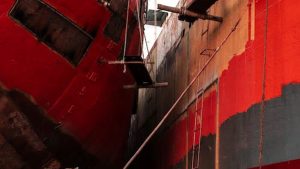
Safety Precautions: Protecting Yourself and the Environment
When it comes to ship painting and blasting during repair projects in the Philippines, safety should be a top priority for every Filipino worker. While these processes may seem straightforward, there are several precautions that must be taken to prevent accidents and protect both the workers and the environment.
Firstly, personal protective equipment (PPE) is essential. Proper attire, including gloves, goggles, masks or respirators, and coveralls, should be worn at all times. These items not only shield workers from harmful substances such as toxic chemicals or dust but also prevent injuries caused by accidental spills or splatters.
Additionally, it’s important to minimize exposure to hazardous materials. Ensuring proper ventilation in paint booths or blast rooms can help in controlling emissions and reducing health risks associated with airborne toxins. Proper disposal of waste materials like used paints or solvents is equally vital to safeguard the environment. By adhering to safety standards and following environmentally-conscious practices, we can ensure a safer working environment for everyone involved while doing our part in protecting Mother Earth.
Remember, your well-being matters just as much as the condition of the ships you work on. By staying vigilant about safety precautions and taking proactive steps towards environmental stewardship, you can contribute towards sustainable growth in the ship maintenance industry while keeping yourself safe throughout each project.
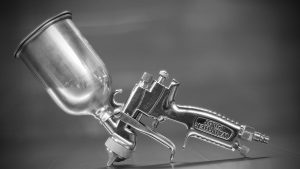
Environmental Protection in Ship Painting and Blasting
In recent years, there has been a growing awareness of the environmental impacts of ship painting and blasting during repairs in the Philippines. Traditional methods often involved the use of toxic chemicals and harmful substances that could be detrimental to marine ecosystems. However, with increased regulations and advancements in technology, there is now a greater emphasis on environmentally friendly practices in the maritime industry.
One notable development is the use of abrasive materials that are safe for both workers and the environment. Instead of relying on toxic chemicals, shipyards now utilize alternative methods such as hydro-blasting or dry ice blasting to remove old paint from ships. These techniques not only reduce hazardous waste but also minimize air pollution commonly associated with traditional sandblasting methods.
Moreover, efforts are being made to limit the release of volatile organic compounds (VOCs) into the atmosphere during ship painting processes. VOCs contribute to air pollution and can have adverse effects on human health as well as marine life. To address this issue, low-VOC paints are becoming more widely used in shipyards. These paints significantly decrease emissions without compromising performance or longevity.
Environmental protection in ship painting and blasting in the Philippines is crucial for preserving our oceans’ health while ensuring safe working conditions for employees involved in repair projects. By adopting eco-friendly practices, we can mitigate ecological damage caused by conventional methods while setting a new standard for sustainability in the maritime industry.
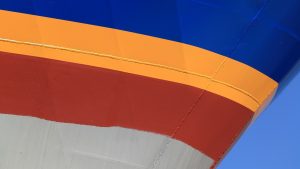
Proper Maintenance After Repairs
After completing ship painting and blasting repairs in the Philippines, it is crucial to prioritize proper maintenance to ensure the longevity of the vessel. One important aspect of maintenance is regular inspections to identify any signs of corrosion or damage. By spotting these issues early on, you can address them promptly and prevent further costly repairs down the line.
Additionally, it is essential to establish a routine cleaning schedule for your vessel. This includes removing dirt, grime, and saltwater residue that can contribute to corrosion. It is recommended to use marine-approved cleaning agents and gentle scrub brushes or pressure washers specifically designed for marine use. Regular cleaning not only keeps your ship looking its best but also helps maintain its structural integrity.
Lastly, don’t forget about lubrication. Ensuring that all moving parts, such as hinges, bolts, and gears, are well-lubricated will minimize friction and wear and tear over time. Consider using high-quality marine-grade lubricants that are suitable for various weather conditions.
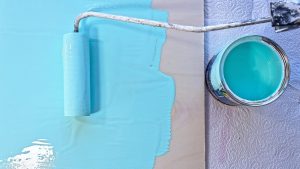
Proper Techniques for Ship Painting and Blasting
When it comes to ship painting and blasting, there are several proper techniques that Filipinos should keep in mind to ensure successful repairs. One technique is adequate surface preparation before painting or blasting. This includes removing any loose paint or rust and ensuring the surface is clean and dry. Failure to do so can lead to poor adhesion of the coating or an uneven finish.
Another important technique is using the right equipment for blasting. The type of abrasive material and pressure used can greatly affect the effectiveness of the process. It’s crucial to choose the appropriate size and hardness of abrasive material based on the surface being blasted. Additionally, adjusting the pressure according to the condition of the hull is important in order to achieve a thorough cleaning without damaging the structure.
Adhering to these proper techniques not only ensures a high-quality finish but also extends the lifespan of ships by preventing corrosion and other damage. By taking these steps seriously, Filipino repair teams can ensure their work meets international standards, making them more competitive in an increasingly global maritime industry.
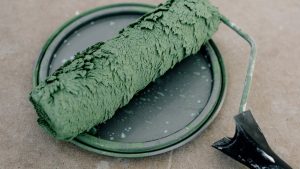
Tips for Cost-Effective Ship Painting and Blasting in the Philippines
In the Philippine maritime industry, ship painting and blasting are essential aspects of repairs and maintenance. However, these processes can be quite costly if not approached strategically. For Filipinos involved in ship repairs, here are some tips to help make ship painting and blasting more cost-effective.
Firstly, proper surface preparation is crucial to achieving a long-lasting paint job. Prioritize thorough cleaning and removal of old paint layers through sandblasting or other abrasive methods. This ensures that the new coat adheres well and minimizes future maintenance costs. Secondly, when it comes to choosing paint products, opt for high-quality paints that offer good coverage and durability. Although they may have a higher upfront cost, they tend to last longer and require fewer touch-ups in the long run.
Furthermore, consider partnering with professional Filipino companies like Amaya Dockyard & Marine Services Inc. (ADMSI) which specialize in ship painting and blasting services. While it might be tempting to cut costs by handling these tasks internally, experts bring vast experience, specialized equipment, and knowledge of effective techniques that can save both time and money. Lastly, explore environmentally friendly options such as water-based paints, which often have lower VOC (volatile organic compounds) content compared to traditional solvent-based alternatives. By reducing waste generation during repainting jobs while maintaining quality standards, you contribute not only to cost savings but also to sustainable practices within the industry.
Implementing these strategies will not only save you money but also ensure that your ships maintain their aesthetic appeal while being protected against corrosion – keeping them seaworthy for years to come!
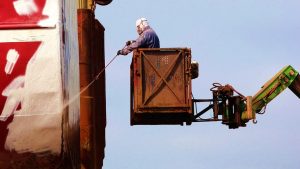
Hiring Professional Services vs. DIY Approach
When it comes to ship painting and blasting during repairs, many Filipinos face the decision of whether to hire professional services or take a DIY approach. Hiring professionals like Amaya Dockyard & Marine Services Inc. (ADMSI) may seem like the safer and more convenient option, but it often comes with a hefty price tag. On the other hand, taking a DIY approach can save money upfront but requires considerable time, effort, and expertise.
One advantage of hiring professional services is their extensive knowledge and experience in ship painting and blasting. Professionals have undergone specialized training and have access to advanced equipment that can ensure quality results. They understand the intricacies of different surfaces, coatings, and environmental conditions, which can greatly reduce the risk of errors or damage during the process.
However, opting for a DIY approach has its own merits as well. It gives you complete control over every aspect of the project and allows you to work at your own pace. Furthermore, taking on such tasks yourself can provide valuable learning experiences that will serve beneficially in future maintenance projects.
Ultimately, the decision between hiring professional services or embarking on a DIY journey depends on individual circumstances such as budget constraints, level of expertise required for the job at hand, time availability, and personal preferences.
Are You Looking for Ship Painting and Blasting Company in the Philippines?
Amaya Dockyard & Marine Services Inc. (ADMSI) is your go-to ship painting and blasting company in the Philippines. With their expertise in the maritime industry, they offer cost-effective solutions for all your ship repair needs. Whether you need a fresh coat of paint or require blasting services to remove rust and corrosion, ADMSI has got you covered.
- Email us: info@amayadockyard.com
- Call our 24-hour hotline: +63 917 633 0479
- Viber: +63 917 633 0479
- WhatsApp: +63 917 633 0479
- Facebook Messenger: Click here
- Click here to inquire
What sets ADMSI apart from other companies is its commitment to quality and efficiency. They understand the importance of maintaining the structural integrity of a ship while enhancing its appearance, and their team of skilled professionals ensures that every project is completed to perfection. By utilizing state-of-the-art equipment and following strict safety protocols, ADMSI guarantees outstanding results that meet international standards.
Hiring a reliable ship painting and blasting company like ADMSI not only enhances the aesthetic appeal of your vessel but also contributes to its longevity. Regular maintenance and repairs are essential for ensuring the safety of both crew members and cargo on board. So if you’re a Filipino ship owner looking for top-notch services at competitive prices, don’t hesitate to contact ADMSI for all your ship painting and blasting needs!

Summing Up: Enhancing the Longevity and Performance of Ships with Ship Painting and Blasting
In conclusion, ship painting and blasting play a crucial role in enhancing the longevity and performance of ships during repairs. By removing old layers of paint through blasting, the surface is prepared for a fresh coat that not only improves aesthetics but also provides protection against corrosion. Additionally, ship painting helps to improve fuel efficiency by reducing drag and optimizing hull smoothness.
One of the key benefits of ship painting and blasting is the prevention of rust formation, which can compromise the structural integrity of a vessel. Through regular maintenance and repainting, ships can be safeguarded from the harsh marine environment, ultimately extending their lifespan. Moreover, with advancements in paint technology, such as anti-fouling coatings that deter barnacles and other marine organisms from attaching to the hull, cleaning efforts are significantly reduced.
In today’s competitive shipping industry, where companies strive to increase operational efficiency and reduce costs, investing in ship painting and blasting is a wise decision. Not only does it contribute to maintaining a vessel’s market value over time, but it also ensures compliance with environmental regulations regarding emissions control. With proper care and attention given to ship maintenance through painting and blasting practices, ships can continue sailing smoothly on the seas while maximizing their lifespan.

